Exhibit.
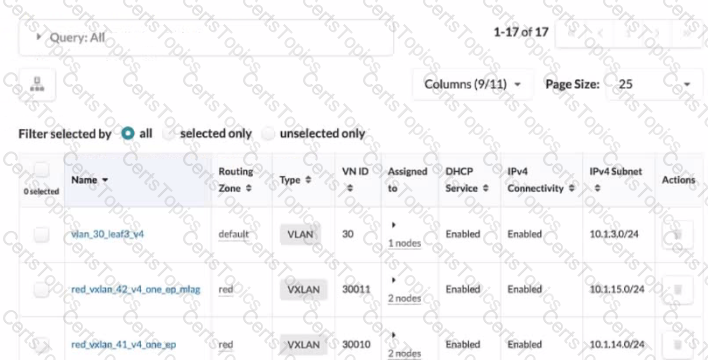
Referring to the exhibit, how do you display the IPv6 subnets lot all of the listed VXLANs?
Exhibit.
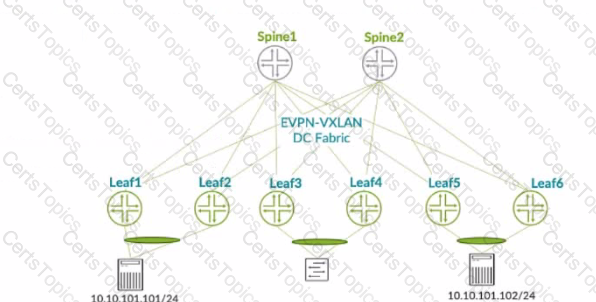
In the EVPN-VXLAN data center fabric bridged overlay architecture shown in the exhibit, the servers are connected to Lead and Leat6 using the same virtual network identifier (VNI).
Which two statements are correct in this scenario? (Choose two.)
Which protocol is used to advertise EVPN routes?
You are working with a three-stage IP fabric using EBGP for peering.
In this scenario, which two actions are required to implement ECMP? (Choose two.)
Exhibit.
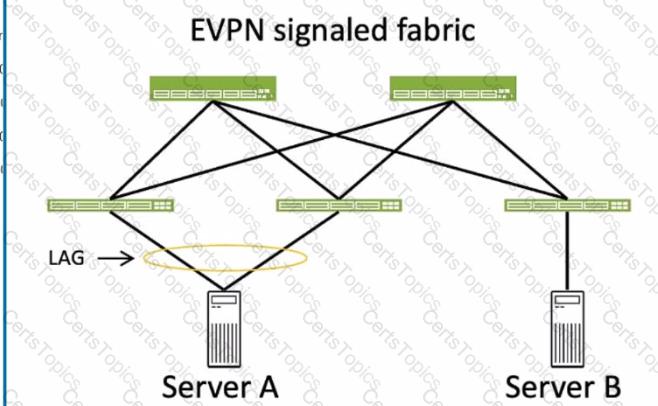
Which two statements about ESI values are correct for the server connections to the fabric shown in the exhibit? (Choose two.)
Exhibit.
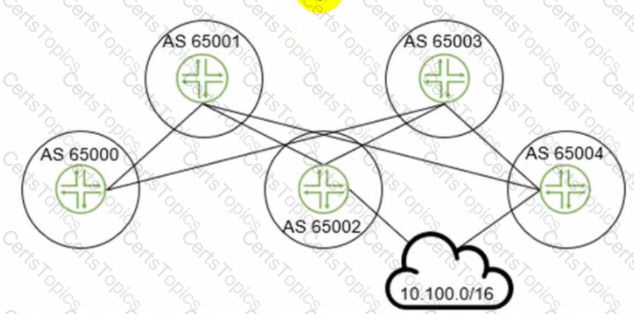
The 10.100.0.0/16 route is being advertised into your BGP IP fabric. ECMP load balancing has been properly enabled on all devices
In this scenario, how many routes will the leaf device in AS 65000 receive for the 10.100.0.0/16 prefix?
You want to add a configuration that is not supported by Juniper Apstra reference architecture using a configlet.
Which two configurations would be applicable in this scenario? (Choose two.)
In the Juniper Apstra Ul. you are creating a VNI pool for virtual networks.
In this scenario, which VNI range is acceptable?
Exhibit.
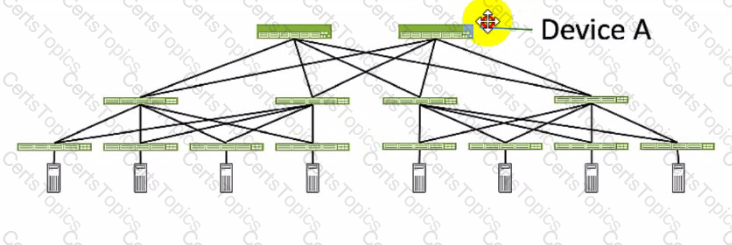
Referring to the exhibit, which role does Device A serve in an IP fabric?
Which two statements are correct about repairing a Juniper Apstra cabling map before deploying your blueprint? (Choose two.)
You are installing a Juniper Apstra server in your data center. You have multiple users that will be expected to configure, manage, and carry out operational tasks in your data center. You have decided to implement remote user authentication for the role-based access control of your Apstra server.
In this scenario, which three methods are supported? (Choose three.)
Exhibit.
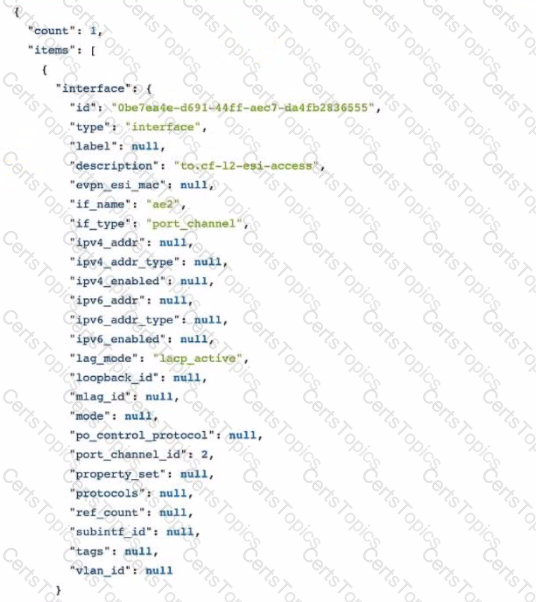
Which two statements ate correct about the graph query output shown in the exhibit? (Choose two.)
Which two actions are required during Juniper Apstra's deploy phase? (Choose two.)
Which three statements describe intent-based analytics? (Choose three.)
You are using Juniper Apstra to design a data center fabric.
In this scenario, which object type associates a specific vendor model to a logical device?
When editing a device configuration to install some manual changes, which procedure should be followed?
What is the purpose of using a routing zone inside Juniper Apstra software?
InJuniper Apstra. which three modes are available fordevices? (Choose three.)
You have recently committed a change after creating a new blueprint in Juniper Apstra. In the main dashboard, you see a number of anomalies related to BGR What is a likely cause of these anomalies?